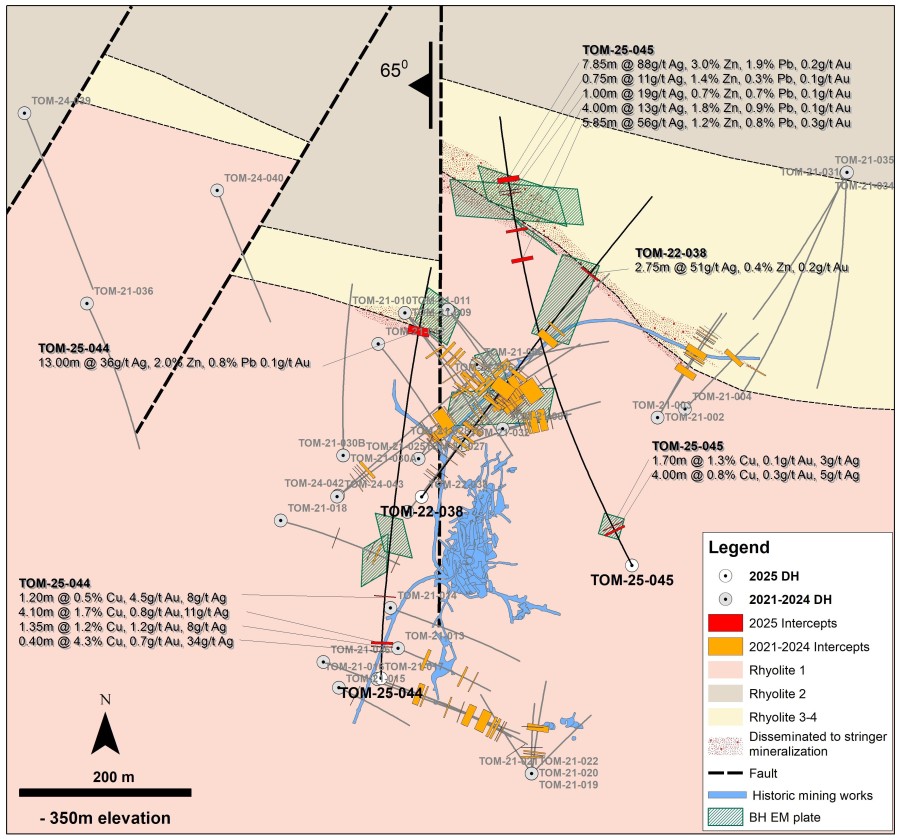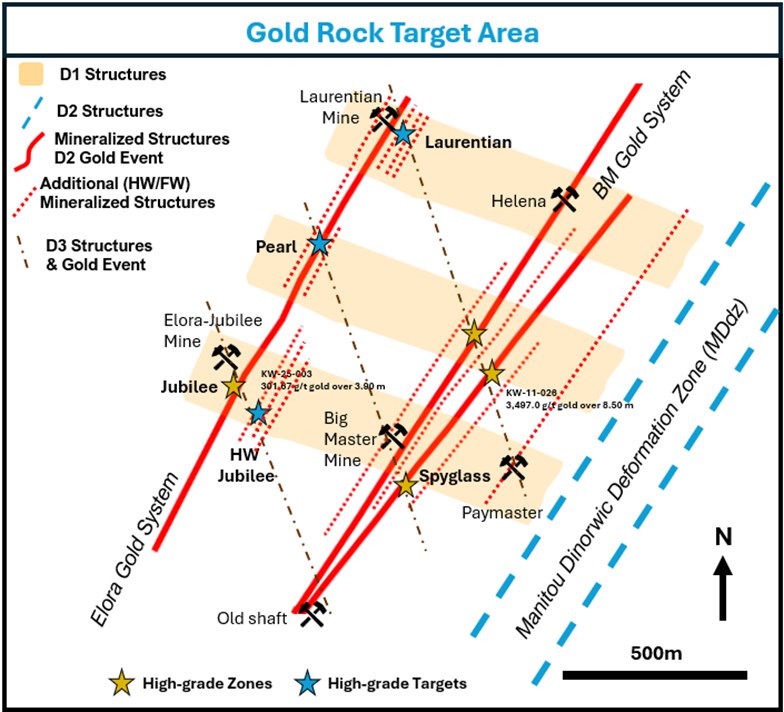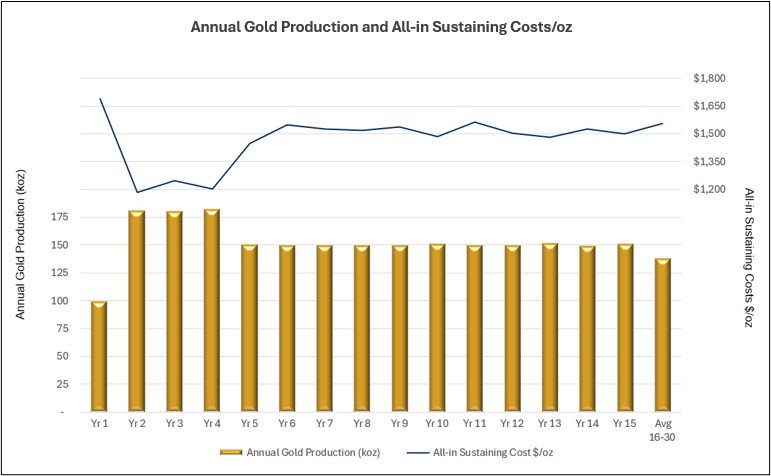VANCOUVER, British Columbia, Nov. 27, 2017 (GLOBE NEWSWIRE) -- Search Minerals Inc. ("Search" or the "Company") (TSX-V:SMY), and its wholly-owned subsidiary, Alterra Resources Inc. (“Alterra”), are pleased to announce that the 2000m drill program at Deep Fox has started. The drill is operating at the first hole site and the Company will be processing all the drill core at its facilities in St. Lewis, before being sent to ActLabs for assays. Search is also pleased to announce the results of an infill channel program, completed in July 2017, at the Deep Fox CREE (Critical Rare Earth Element) prospect located in the Port Hope Simpson (PHS) CREE District in SE Labrador. These results support high grades and significant widths at Deep Fox and establish a surface assay database that will be merged with results from the upcoming drill program to define a CREE resource at Deep Fox.
Greg Andrews, President and CEO comments: “We are very excited to initiate the Deep Fox drill program. This drill program has been a goal of the Company, and we are happy to deliver on this milestone. In addition, the new infill channel assay results for Deep Fox allow Dr. Randy Miller and his team to utilize the information for the drill program. The compelling reasons to drill the Deep Fox property remain: 1) Deep Fox has shown higher grades on surface of the key rare earth elements (Nd, Pr, Dy, Tb); 2) it has a similar strike length to Foxtrot but larger widths; 3) it displays better extraction results to those achieved on the Foxtrot material, and; 4) definition of a second resource supports the district concept.”
DRILL PROGRAM UPDATE
The drilling has commenced on drill hole FD-17-01 at the Deep Fox prospect. Additional holes will test for mineralization at depth along the 450m observed surface strike length. The Company expects that this 2000m program will provide it with approximately 13 holes, designed to intersect mineralization from 25m to 100m depth. A successful drill program would confirm that the geological model at Deep Fox is similar to that observed at Foxtrot. At Foxtrot, drilling confirmed a close correspondence between surface channel geology/assays and drill core geology/assays down to at least 400m intersections.
The drill program is expected to take 30 - 50 days and should be completed in January, taking into account the Christmas/New Year’s Day break. Assays results and analysis should be available in up to 6 weeks following completion of the drill program.
HIGHLIGHTS OF THE DEEP FOX CHANNEL PROGRAM
- New Deep Fox infill channels support high CREE grades and significant widths that are similar to or higher than Foxtrot grades;
- Assay highlights: 1421 ppm Y, 1955 ppm Nd, 516 ppm Pr, 50.6 ppm Tb and 282 ppm Dy over 6.54m (true width);
- New channel results will be used to help guide the 2000m drilling program at Deep Fox.
The new five-channel infill channel program at Deep Fox, which provided 215 assay samples over 220 m, was carried out in July 2017. Table 1, below, provides highlights of the channel program. Analytical techniques, sample preparation, and channel sampling procedures are below under “Quality Assurance / Quality Control (QA/QC)”.
Table 1. DEEP FOX PROSPECT VALUES
| DEEP FOX PROSPECT | ||||||||
| FDC-17-02 (Channel) |
FDC-17-04 (Channel) |
FDC-17-05 (Channel) |
FDC-17-05 (Channel) |
|||||
| From (m) To (m) Interval (m) |
23.86 30.40 6.54 |
24.72 32.13 7.41 |
12.71 51.26 38.55 |
27.50 33.70 6.20 |
||||
| Y | 1,421 | 1,239 | 1,104 | 1,277 | ||||
| Zr | 14,122 | 13,706 | 10,614 | 12,588 | ||||
| Nb | 692 | 635 | 643 | 678 | ||||
| La | 2,095 | 2,054 | 2,019 | 1,961 | ||||
| Ce | 4,428 | 4,259 | 4,021 | 4,025 | ||||
| Pr | 516 | 485 | 448 | 460 | ||||
| Nd | 1,955 | 1,814 | 1,677 | 1,746 | ||||
| Sm | 363 | 340 | 304 | 328 | ||||
| Eu | 19.3 | 17.5 | 15.4 | 16.0 | ||||
| Gd | 296 | 269 | 237 | 256 | ||||
| Tb | 50.6 | 44.5 | 38.6 | 40.3 | ||||
| Dy | 282 | 255 | 217 | 244 | ||||
| Ho | 53.0 | 47.5 | 40.5 | 48.3 | ||||
| Er | 148 | 135 | 115 | 138 | ||||
| Tm | 20.5 | 18.6 | 15.7 | 19.4 | ||||
| Yb | 127 | 115 | 96 | 119 | ||||
| Lu | 17.8 | 16.8 | 14.6 | 17.1 | ||||
| LREE | 9357 | 8952 | 8469 | 8520 | ||||
| HREE | 1014 | 919 | 790 | 899 | ||||
| HREE+Y | 2435 | 2158 | 1894 | 2175 | ||||
| TREE | 10371 | 9871 | 9259 | 9419 | ||||
| TREE+Y | 11792 | 11110 | 10363 | 10696 | ||||
| % TREE | 1.04% | .99% | .93% | .94% | ||||
| %TREE+Y | 1.18% | 1.11% | 1.04% | 1.07% | ||||
| %HREE | 9.78% | 9.31% | 8.53% | 9.54% | ||||
| %HREE +Y | 20.65% | 19.42% | 18.28% | 20.34% | ||||
| Note; REE TREE LREE HREE Y %HREE+Y %HREE |
All elements parts per million (ppm), 10,000 ppm = 1% = 10kg/tonne Rare Earth Elements: La, Ce, Pr, Nd, Sm, Eu, Gd, Tb, Dy, Ho, Er, Tm, Yb, Lu (Lanthanide Series). Total Rare Earth Elements: Add La, Ce, Pr, Nd, Sm, Eu, Gd, Tb, Dy, Ho, Er, Tm, Yb, Lu Light Rare Earth Elements: Add La, Ce, Pr, Nd, Sm. Heavy Rare Earth Elements: Add Eu, Gd, Tb, Dy, Ho, Er, Tm, Yb, Lu. Y not included in HREE due to relatively low value compared to most Lanthanide series HREE. %(HREE+Y)/( TREE+Y) %( HREE/ TREE) |
|||||||
The program assay and logging results were combined with previous results from 2014/2015 (see Search Minerals news releases Jan. 27th, 2015 and Oct. 15th 2015) to develop a surface geological and geochemical database. This database will be used to guide the drill program at Deep Fox (see Search Minerals news release Oct. 25th, 2017) and will be combined with the drill results to develop a Deep Fox CREE resource.
The Deep Fox (formerly Deepwater Fox) prospect (see Search Minerals news releases Jan. 27th, 2015 and Oct 15th 2015) occurs about 2 km NE from the port of St. Lewis on the SE Labrador coast and within 12 km of the Foxtrot Deposit. It can be accessed by all-weather gravel roads and by water through the port of St. Lewis.
Qualified Person(s):
Dr. Randy Miller, Ph.D., P.Geo, is the Company's Vice President, Exploration, and Qualified Person (as defined by National Instrument 43-101) who has supervised the preparation of and approved the technical information reported herein. The Company will endeavour to meet high standards of integrity, transparency, and consistency in reporting technical content, including geological and assay (e.g., REE) data.
Quality Assurance / Quality Control (QA/QC):
Channel samples, 10cm deep and 8cm wide, are cut by gas-powered diamond saw from cleaned outcrops to provide samples for assay and logging/reference. Each channel is cut into two vertical sections, similar to drill core, with a 6 cm thick section (weathering removed) being sent out for assay to Activation Laboratories Ltd. A 2 cm thick section is stored in channel boxes for reference and to provide due diligence/verification samples. The channels are cut perpendicular to strike, pieced together, logged and photographed to produce geological and geochemical sections. These channel samples, or horizontal drill holes, produce the same data as vertical diamond drill holes, except the data is from horizontal geological sections and the collected sample is 6 to 8 times bigger than NQ drill core. Additional 8 cm wide cuts from a channel interval make excellent preliminary metallurgical samples (1m of channel yields about 30kg of sample).
Lithogeochemistry samples, all from bedrock, are collected by Company personnel, bagged and described. Reference samples are also collected for each grab, lithogeochemistry and channel sample. The samples are shipped to Activation Laboratories Ltd. (ActLabs) sample prep facility in Ancaster, Ontario, where they are crushed to 80% -10 mesh and riffled to produce a representative sample. This sample is then pulverized to 95% -200 mesh with the pulverizing mills being cleaned between each sample with cleaning sand. A representative sample is treated by a lithium metaborate/tetraborate fusion and then analyzed by ICP and ICP/MS techniques. Mass balance is required as an additional quality control technique and elemental totals of the oxides should be between 98% and 101%. For QA/QC purposes Search requires duplicates every 25 samples and two Search reproducibility standards every 50 samples. ActLabs analyzes duplicates and splits approximately every 15 samples and also analyses 29 measured standards for QA/QC. To further enhance our QA/QC procedures Search has a program of checking analytical results with other labs to confirm the ActLabs results. ActLabs is a ISO/IEC 17025 accredited laboratory.
About Search Minerals Inc.
Led by a proven management team and board of directors, Search is focused on finding and developing resources within the emerging Port Hope Simpson Critical Rare Earth Element (“CREE”) District of South East Labrador (the “District”). The Company controls a belt 70 km long and 8 km wide including its 100% interest in the FOXTROT Project which is road accessible and at tidewater. Exploration efforts have advanced “Deep Fox” and “Fox Meadow” as significant new CREE prospects very similar and in close proximity to the original FOXTROT discovery. While the Company has identified more than 20 other prospects in the District, its primary objective remains development of FOXTROT with the clearly demonstrated success of the proprietary processing technology at the pilot plant level and delineation of prospects that will ensure competitive-low cost production beyond the 14-year mine life contemplated in the preliminary economic assessment of FOXTROT completed in April 2016. The FOXTROT Project has a low capital cost to bring the initial project into production ($152 M), a short payback period and is scalable due to Search’s proprietary processing technology. The preliminary economic assessment is preliminary in nature and includes inferred mineral resources that are considered too speculative geologically to have the economic considerations applied to them that would enable them to be categorized as mineral reserves, and there is no certainty that the preliminary economic assessment will be realized. The preliminary economic assessment includes the results of an economic analysis of mineral resources. Mineral resources are not mineral reserves and do not have demonstrated economic viability.





